The following list represents a selection of some of Sigmund Freud's most famous and influential books.
The Freud Reader
The fifty-one texts in this volume range from Freud's dreams, to essays on sexuality, and on to his late writings, including Civilization and Its Discontents. Peter Gay, a leading scholar of Freud and his work, has carefully chosen these selections to provide a full portrait of Freud's thought. His clear introductions to the selections help guide the reader's journey through each work.
•
The Basic Writings of Sigmund Freud
This classic edition of The Basic Writings of Sigmund Freud includes complete texts of six works that have profoundly influenced our understanding of human behavior.Psychopathology of Everyday Life, The Interpretation of Dreams, Three Contributions to the Theory of Sex, Wit and Its Relation to the Unconsious, Totem and Taboo and The History of the Psychoanalytic Movement.
•
Civilization and Its Discontents
Freud’s seminal volume of twentieth-century cultural thought grounded in psychoanalytic theory, now with a new introduction by Christopher Hitchens.
•
Introductory Lectures on Psychoanalysis
In 1915 at the University of Vienna 60-year-old Sigmund Freud delivered these lectures on psychoanalysis, pointing to the interplay of unconscious and conscious forces within individual psyches.
•
The Future of an Illusion
In the manner of the eighteenth-century philosophe, Freud argued that religion and science were mortal enemies. Early in the century, he began to think about religion psychoanalytically and to discuss it in his writings. The Future of an Illusion (1927), Freud's best known and most emphatic psychoanalytic exploration of religion, is the culmination of a lifelong pattern of thinking.
•
Three Essays on the Theory of Sexuality
Freud's groundbreaking, trouble-making theory of sexuality -- infantile (developmental), adolescent (transformational), and deviant -- in the classic Strachey translation, with a new foreword by Nancy Chodorow, who re-animates it from the postmodern perspectives of feminist psychoanalysis and the sociology of gender.
•
The Interpretation of Dreams
The book introduces Freud's theory of the unconscious with respect to dream interpretation, and also first discusses what would later become the theory of the Oedipus complex. Dreams, in Freud's view, are all forms of "wish fulfillment" — attempts by the unconscious to resolve a conflict of some sort, whether something recent or something from the recesses of the past (later in Beyond the Pleasure Principle, Freud would discuss dreams which do not appear to be wish-fulfillment).
•
Five Lectures on Psycho-Analysis
Newly designed in a uniform format, each new paperback in the Standard Edition opens with a biographical essay on Freud's life and work along with a note on the individual volume by Peter Gay, Sterling Professor of History at Yale.
•
Dora: An Analysis of a Case of Hysteria
Freud published a case study about Dora, Fragments of an Analysis of a Case of Hysteria (1905 [1901], Standard Edition Vol.7, pp1–122) - the first, and subsequently the most controversial, of his published case-studies.
•
The Ego and the Id
In 1923, in this volume, Freud worked out important implications of the structural theory of mind that he had first set forth three years earlier in Beyond the Pleasure Principle.The Ego and the Id ranks high among the works of Freud's later years. The heart of his concern is the ego, which he sees battling with three forces: the id, the super-ego, and the outside world.
•
A General Introduction to Psychoanalysis
A General Introduction to Psychoanalysis is one of the most famous works of Sigmund Freud. In it Freud enthusiastically outlines his approach to the unconscious, dreams, the theory of neuroses and some technical issues in the form in which it was formulated at the time of reading the lectures in Vienna in 1916-1917. These twenty-eight lectures to laymen are elementary and almost conversational. Freud sets forth with a frankness almost startling the difficulties and limitations of psychoanalysis, and also describes its main methods and results as only a master and originator of a new school of thought can do.These discourses are at the same time simple and almost confidential, and they trace and sum up the results of thirty years of devoted and painstaking research. While they are not at all controversial, we incidentally see in a clearer light the distinctions between the master and some of his distinguished pupils.
•
Beyond the Pleasure Principle
A collection of some of Freud's most famous essays, including "On The Introduction of Narcissism", "Remembering, Repeating and Working Through", "Beyond the Pleasure Principle", "The Ego and the ID" and "Inhibition, Symptom and Fear".
•
The Uncanny
Freud was fascinated by the mysteries of creativity and the imagination. The groundbreaking works that comprise The Uncanny present some of his most influential explorations of the mind. In these pieces Freud investigates the vivid but seemingly trivial childhood memories that often "screen" deeply uncomfortable desires; the links between literature and daydreaming; and our intensely mixed feelings about things we experience as "uncanny." Also included is Freud's celebrated study of Leonardo Da Vinci-his first exercise in psychobiography.
•
Group Psychology and the Analysis of the Ego
To Freud, individual and social psychology were virtually identical.The question he addresses here is, What are the emotional bonds that hold collective entities, such as an army and a church, together? It is a fruitful question, and Freud offers some interesting answers. But Group Psychology and the Analysis of the Ego stands chiefly as an invitation to further psychoanalytic exploration.
•
New Introductory Lectures on Psycho-Analysis
Of the various English translations of Freud's major works to appear in his lifetime, only one was authorized by Freud himself: The Standard Edition of the Complete Psychological Works of Sigmund Freud under the general editorship of James Strachey.
•
Three Case Histories
Notes upon a case of obessional neurosis (1909)Psychoanalytic notes upon an autobiographical account of a case of paranoia (dementia paranoides) (1911)From the history of an infantile neurosis (1918)
•
Moses and Monotheism
Freud's speculations on various aspects of religion where he explains various characteristics of the Jews in their relations with the Christians.
•
On Dreams
Directly after the 1900 publication of The Interpretation of Dreams, Freud wrote this more concise, accessible version of his theory of dreams as disguised wish fulfillment. This classic of modern psychology contrasts scientific and popular views of dreams, considers their origins, and discusses the effects of mental mechanisms.
•
An Outline of Psycho-Analysis
•
Totem and Taboo
Totem and Taboo (1913), first published as a series of four articles between 1912 and 1913, is among Freud's most dazzling speculative texts.Adducing evidence from "primitive" tribes, neurotic women, child patients traversing the oedipal phase, and speculations by Charles Darwin, James G. Frazer, and other modern scholars, Freud attempts to trap the moment that civilized life began. It stands as his most imaginative venture into the psychoanalysis of culture.
•
The Ego and the Id
The Ego & the Id ranks high among the works of Freud's later years. The heart of his concern is the ego, which he sees battling with three forces: the id, the super-ego & the outside world.
•
Jokes and Their Relation to the Unconscious
Freud argues that the "joke-work" is intimately related to the "dream-work" which he had analyzed in detail in his Interpretation of Dreams, and that jokes (like all forms of humor) attest to the fundamental orderliness of the human mind.While in this book Freud tells some good stories with his customary verve and economy, its point is wholly serious.
•
Civilization and Its Discontents - Unabridged edition
An unabridged edition of the Sigmund Freud classic, Civilization & Its Discontents, with the original, and updated footnotes -
•
The Schreber Case
Freud rarely treated psychotic patients or psychoanalyzed people just from their writings, but he had a powerful and imaginative understanding of their condition—revealed, most notably, in this analysis of a remarkable memoir. In 1903, Judge Daniel Schreber, a highly intelligent and cultured man, produced a vivid account of his nervous illness dominated by the desire to become a woman, terrifying delusions about his doctor, and a belief in his own special relationship with God. Eight years later, Freud's penetrating insight uncovered the impulses and feelings Schreber had about his father, which underlay his extravagant symptoms.
•
The Wolfman and Other Cases
When a disturbed young Russian man came to Freud for treatment, the analysis of his childhood neuroses—most notably a dream about wolves outside his bedroom window—eventually revealed a deep-seated trauma. It took more than four years to treat him, and "The Wolfman" became one of Freud's most famous cases. This volume also contains the case histories of a boy's fear of horses and the Ratman's violent fear of rats, as well as the essay "Some Character Types," in which Freud draws on the work of Shakespeare, Ibsen, and Nietzsche to demonstrate different kinds of resistance to therapy. Above all, the case histories show us Freud at work, in his own words.
•
The Question of Lay Analysis
Freud believed that a medical education was not necessarily useful to, and might even impede, the psychoanalyst, but he met strenuous resistance among his followers, particularly in the United States.
In The Question of Lay Analysis he set forth his views on the issue. The book makes its point energetically and in addition serves as an informal popularization of psychoanalytic ideas.
•
The Psychopathology of Everyday Life
Along with the Introductory Lectures on Psycho-analysis, this book remains one of Freud's most widely read.It is filled with anecdotes, many of them quite amusing, and virtually bereft of technical terminology. And Freud put himself on the line: numerous acts of willful forgetting or "inexplicable" mistakes are recounted from his personal experience. none of such actions can be called truly accidental, or uncaused: that is the real lesson of the Psychopathology.
•
Dream Psychology
Dreams have a meaning. Once we learn how to interpret them, we can begin to decipher their meaning. In “Dream Psychology”, published in 1920, Freud demonstrates how the interpretation of dreams can illuminate the desires of the unconscious.
•
The Interpretation of Dreams (Oxford World's Classics)
One hundred years ago Sigmund Freud published The Interpretations of Dreams, a book that, like Darwin's The Origin of Species, revolutionized our understanding of human nature. Now this groundbreaking new translation--the first to be based on the original text published in November 1899--brings us a more readable, more accurate, and more coherent picture of Freud's masterpiece.
The first edition of The Interpretation of Dreams is much shorter than its subsequent editions; each time the text was reissued, from 1909 onwards, Freud added to it. The most significant, and in many ways the most unfortunate addition, is a 50-page section devoted to the kind of mechanical reading of dream symbolism--long objects equal male genitalia, etc.--that has gained popular currency and partially obscured Freud's more profound insights into dreams. In the original version presented here, Freud's emphasis falls more clearly on the use of words in dreams and on the difficulty of deciphering them. Without the strata of later additions, readers will find here a clearer development of Freud's central ideas--of dream as wish-fulfillment, of the dream's manifest and latent content, of the retelling of dreams as a continuation of the dreamwork, and much more. Joyce Crick's translation is lighter and faster-moving than previous versions, enhancing the sense of dialogue with the reader, one of Freud's stylistic strengths, and allowing us to follow Freud's theory as it evolved through difficult cases, apparently intractable counter-examples, and fascinating analyses of Freud's own dreams.
The restoration of Freud's classic is a major event, giving us in a sense a new work by one of this century' most startling, original, and influential thinkers.
•
The Psychology of Love
Freuds landmark writings on love and sexuality, including the famous case study of Dora, newly translated and in one volume for the first timeThis original collection brings together the most important writings on the psychology of love by one of the great thinkers of the twentieth century. Sigmund Freuds discussions of the ways in which sexuality is always psychosexuality, that there is no sexuality without fantasy, have changed social, cultural, and intellectual attitudes toward erotic life. Among the influential pieces included here are: On Female Sexuality, The Taboo of Virginity, A Child Is Being Beaten, and the widely cited case history of the eighteen-year-old Dora, making The Psychology of Love essential reading for anyone who wants to understand Freud?s tremendous legacy.
•
Leonardo da Vinci and a Memory of His Childhood
Leonardo da Vinci (1910) remains among the most fascinating, though speculative, works of Freud's entire output.A detailed reconstruction of Leonardo's emotional life from his earliest years, it represents Freud's first sustained venture into biography from a psychoanalytic perspective, and also his effort to trace one route that homosexual development can take.
•
Studies in Hysteria (Penguin Classics)
Hysteria—the tormenting of the body by the troubled mind—is among the most pervasive of human disorders; yet, at the same time, it is the most elusive. Freud’s recognition that hysteria stemmed from traumas in the patient’s past transformed the way we think about sexuality. Studies in Hysteria is one of the founding texts of psychoanalysis, revolutionizing our understanding of love, desire, and the human psyche. As full of compassionate human interest as of scientific insight, these case histories are also remarkable, revelatory works of literature.
•
The Joke and Its Relation to the Unconscious (Penguin Classics)
Why do we laugh? The answer, argued Freud in this groundbreaking study of humor, is that jokes, like dreams, satisfy our unconscious desires. The Joke and Its Relation to the Unconscious explains how jokes provide immense pleasure by releasing us from our inhibitions and allowing us to express sexual, aggressive, playful, or cynical instincts that would otherwise remain hidden. In elaborating this theory, Freud brings together a rich collection of puns, witticisms, one-liners, and anecdotes, which, as Freud shows, are a method of giving ourselves away.
•
On Murder, Mourning, and Melancholia (Penguin Modern Classics)
These works were written against a background of war and racism. Freud sought the sources of conflict in the deepest memories of humankind, finding clear continuities between our 'primitive' past and 'civilized' modernity. In "Totem and Taboo", he explores institutions of tribal life, tracing analogies between the rites of hunter-gatherers and the obsessions of urban-dwellers, while "Mourning and Melancholia" sees a similarly self-destructive savagery underlying individual life in the modern age, which issues at times in self-harm and suicide. And Freud's extraordinary letter to Einstein, Why War? - Rejecting what he saw as the physicist's naive pacifism - sums up his unsparing view of history in a few profoundly pessimistic, yet grimly persuasive pages.
•
A Case of Hysteria: (Dora) (Oxford World's Classics)
"I very soon had an opportunity to interpret Dora's nervous coughing as the outcome of a fantasized sexual situation."
A new translation of one of Freud's most important and intriguing texts, A Case of Hysteria-- popularly known as the "Dora Case"--affords rare insight into how Freud dealt with patients and interpreted what they told him. As the 18-year-old "Dora" underwent psychoanalysis, Freud uncovered a remarkably unhappy and conflict-ridden family, with several competing versions of their story, and his account of "Dora's" emotional travails is as gripping as a modern novel. The narrative became a crucial text in the evolution of his theories, combining his studies on hysteria and his new theory of dream-interpretation with early insights into the development of sexuality.
This landmark work is freshly translated by Britain's leading translator of German literature, Anthea Bell, while leading authority Ritchie Robertson provides a fascinating introduction which sets the work in its biographical, historical, and intellectual context. Robertson sheds light in particular on the unwitting preconceptions and prejudices with which Freud approached his patient, highlighting both his own blindness and the broader attitudes of turn-of-the-century Viennese society. The book also features explanatory notes that highlight the literary and critical allusions that Freud worked into his text, plus an up-to-date bibliography that helps the reader to explore the topic further.
•
Sexuality and The Psychology of Love
•
The Freud/Jung Letters
This abridged edition makes the Freud/Jung correspondence accessible to a general readership at a time of renewed critical and historical reevaluation of the documentary roots of modern psychoanalysis. This edition reproduces William McGuire's definitive introduction, but does not contain the critical apparatus of the original edition.
•
Writings on Art and Literature
Despite Freud's enormous influence on twentieth-century interpretations of the humanities, there has never before been in English a complete collection of his writings on art and literature. These fourteen essays cover the entire range of his work on these subjects, in chronological order beginning with his first published analysis of a work of literature, the 1907 "Delusion and Dreams in Jensen's Gradiva" and concluding with the 1940 posthumous publication of "Medusa's Head." Many of the essays included in this collection have been crucial in contemporary literary and art criticism and theory.
Among the subjects Freud engages are Shakespeare's Hamlet, The Merchant of Venice, King Lear, and Macbeth, Goethe's Dichtung und Wahrheit, Michelangelo's Moses, E. T. A. Hoffman's "The Sand Man," Dostoevsky's The Brothers Karamazov, fairy tales, the effect of and the meaning of beauty, mythology, and the games of aestheticization. All texts are drawn from The Standard Edition of the Complete Psychological Works of Sigmund Freud, edited by James Strachey. The volume includes the notes prepared for that edition by the editor.
In addition to the writings on Jensen's Gradiva and Medusa, the essays are: "Psychopathic Characters on the Stage," "The Antithetical Meaning of Primal Words," "The Occurrence in Dreams of Material from Fairy Tales," "The Theme of the Three Caskets," "The Moses of Michelangelo," "Some Character Types Met with in Psycho-analytic Work," "On Transience," "A Mythological Parallel to a Visual Obsession," "A Childhood Recollection from Dichtung und Wahrheit," "The Uncanny," "Dostoevsky and Parricide," and "The Goethe Prize."
•
Correspondence by Sigmund Freud, Anna Freud
This book is the first publication of the complete correspondence of Sigmund Freud with his daughter Anna. The correspondence ranges over personal and family matters - social events, family holidays, births and deaths, health issues, war experiences, etc. - as well as professional matters, including the progress of Sigmund Freud’s and Anna Freud’s scientific works, their views on students and colleagues, and the international dissemination and publication of psychoanalytical writings.
The letters provide valuable insight into the work and family life of the founder of psychoanalysis, Sigmund Freud, including the changes in his perception of women that were triggered by his relation with his daughter. They also shed fresh light on the development of Anna’s life and career - the early years in England, the period of her analysis with her own father and the last phase of her father’s illness and death, when Anna became the torch-bearer and protector of her father’s works, and eventually became the leading figure in the International Psychoanalytic Association.
Richly annotated with editorial comments, this unique volume of correspondence between Sigmund and Anna Freud is an invaluable source of historical documentation about the formation and development of psychoanalysis and the early decades of the psychoanalytic movement.
•
Wit and Its Relation to the Unconscious
Brilliant, perceptive work by founder of psychoanalysis remains one of the essential studies of the psychology of wit and jokes. Freud analyzes wit, probes its origins in the "pleasure mechanism," demonstrates parallels of wit to neuroses, dreams and psychopathological acts. This is one of the great analyst's most accessible, enjoyable works.
•
Woodrow Wilson: A Psychological Study
This volume originated when William C. Bullitt began working on a book of studies of the principle personalities surrounding the Treaty of Versailles. In discussing this project with Sigmund Freud, the idea arose of a collaborative work on Woodrow Wilson. They worked on the book for ten years, reading all of Wilson’s published books and speeches as well as volumes written about Wilson. After perusing this material, Bullitt and Freud realized that they could not write an analysis of Wilson’s character unless they deepened their understanding of his nature with private, unpublished information from his intimates. They then set out to collect diaries, letters, records, and memoranda from various associates of Wilson.
Freud writes in his introduction that he did not begin this study with an objective view of Wilson, but rather held an unsympathetic view of him. But he goes on to say that while reading through materials about Wilson, his strong emotions underwent a thorough subjugation. He describes Wilson as a person for whom mere facts held no significance; he esteemed highly nothing but human motives and opinions. As a result, writes Freud, it was natural for him in his thinking to ignore the facts of the real outer world, even to deny they existed if they conflicted with his hopes and wishes. This habit of thought is visible in his contacts with others. Freud also notes that there was an intimate connection between Wilson’s alienation from the world of reality and his religious convictions.
The book opens with a thirty-page biography of Wilson written by Bullitt. The collaborative psychological study that makes up the bulk of the volume then follows. Woodrow Wilson provides readers with a more intimate knowledge of the man, which in turn leads to a more exact estimate of his achievements. This intriguing psychoanalytic study will be of continuing interest to historians, political scientists, psychologists, and sociologists.
•
Die Traumdeutung
This Elibron Classics book is a facsimile reprint of a 1900 edition by Franz Deuticke, Leipzig und Wien.
•
Mass Psychology
Freud's religious unbeliefs are too easily dismissed as the standard scientific rationalism of the twentieth-century intellectual, yet he scorned the high-minded humanism of his contemporaries. In "Mass Psychology and Analysis of the 'I'" he explores the notion of 'mass-psychology' - his findings would prove all too prophetic in the years that followed. Writings such as "A Religious Experience" and "The Future of an Illusion" continue earlier work on the essential savagery of the civilized mind, and "Moses the Man" and "Monotheistic Religion" excavates the roots of religion and racism, which he concludes are inextricably intertwined. This remarkable collection reveals Freud not only at his most radically pessimistic, but also at his most personally courageous - engaging with his own adherences, his own antecedents, his own identity.
•
The Correspondence of Sigmund Freud and Sándor Ferenczi
The young psychiatrist from Budapest had studied medicine in Vienna, he had read The Interpretation of Dreams, and now he was about to meet its author. Seventeen years Sigmund Freud's junior, Sándor Ferenczi (1873-1933) sent off a note anticipating the pleasure of the older man's acquaintance--thus beginning a correspondence that would flourish over the next twenty-five years, and that today provides a living record of some of the most important insights and developments of psychoanalysis, worked out through the course of a deep and profoundly complicated friendship.
This volume opens in January of 1908 and closes on the eve of World War I. Letter by letter, a "fellowship of life, thoughts, and interests" as Freud came to describe it, unfolds here as a passionate exchange of ideas and theories. Ferenczi's contribution to psychoanalysis was, Freud said, "pure gold," and many of the younger man's notions and concepts, proposed in these letters, later made their way into Freud's works on homosexuality, paranoia, trauma, transference, and other topics. To the two men's mutual scientific interests others were soon added, and their correspondence expanded in richness and complexity as Ferenczi attempted to work out his personal and professional conflicts under the direction of his devoted and sometimes critical elder colleague.
Here is Ferenczi's love for Elma, his analysand and the daughter of his mistress, his anguish over his matrimonial intentions, his soliciting of Freud's help in sorting out this emotional tangle--a situation that would eventually lead to Ferenczi's own analysis with Freud. Here is Freud's unraveling relationship with Jung, documented through a heated discussion of the events leading up to the final break. Amid these weighty matters of heart and mind, among the psychoanalytic theorizing and playful speculation, we also find the lighter stuff of life, the talk of travel plans and antiquities, gossip about friends and family. Unparalleled in their wealth of personal and scientific detail, these letters give us an intimate picture of psychoanalytic theory being made in the midst of an extraordinary friendship.
•
Beyond the Pleasure Principle
Beyond the Pleasure Principle is Freud's most philosophical and speculative work, exploring profound questions of life and death, pleasure and pain. In it Freud introduces the fundamental concepts of the "repetition compulsion" and the "death drive," according to which a perverse, repetitive, self-destructive impulse opposes and even trumps the creative drive, or Eros. The work is one of Freud's most intensely debated, and raises important questions that have been discussed by philosophers and psychoanalysts since its first publication in 1920. The text is presented here in a contemporary new translation by Gregory C. Richter. Appendices trace the work's antecedents and the many responses to it, including texts by Plato, Friedrich Nietzsche, Melanie Klein, Herbert Marcuse, Jacques Derrida, and Judith Butler, among many others.
•
The Penguin Freud Reader
Here are the essential ideas of psychoanalytic theory, including Freud's explanations of such concepts as the Id, Ego and Super-Ego, the Death Instinct and Pleasure Principle, along with classic case studies like that of the Wolf Man.Adam Phillips's marvellous selection provides an ideal overview of Freud's thought in all its extraordinary ambition and variety. Psychoanalysis may be known as the 'talking cure', yet it is also and profoundly, a way of reading. Here we can see Freud's writings as readings and listenings, deciphering the secrets of the mind, finding words for desires that have never found expression. Much more than this, however, The Penguin Freud Reader presents a compelling reading of life as we experience it today, and a way in to the work of one of the most haunting writers of the modern age.
•
Dream Psychology; Psychoanalysis For Beginners
2012 Reprint of 1921 Edition. Exact facsimile of the original edition, not reproduced with Optical Recognition Software. Sigmund Freud founded the psychoanalytic school of psychology and is perhaps best known for his focus on the unconscious mind. Freud believed that the interpretation of dreams was important as a point of entry into unconscious desires and the unconscious mind. In "Dream Psychology" we have an exploration of Freud's theories on the interpretation of dreams and through the reading of the following nine chapters of this book readers will gain a better understanding of the theories that made Sigmund Freud such an important figure in the world of psychology: I. Dreams Have a Meaning, II. The Dream Mechanism, III. Why the Dream Disguises the Desires, IV. Dream Analysis, V. Sex in Dreams, VI. The Wish in Dreams, VII. The Function of the Dream, VIII. The Primary and Secondary Process-Regression, and IX. The Unconscious and Consciousness-Reality.
•
Wild Analysis
'Psychoanalytic treatment utilised the patient's capacity to love and desire as a means to an end. The stuff of romance became the stuff of cure. When Freud is writing about technique in psychoanalysis - and these papers [in Wild Analysis] represent his most significant contributions to the subject over three decades of work - it is important to remember that he is talking about what a couple, an analyst and a so-called patient, can do in a room together. For better or worse.' Adam Phillips
•
The Complete Correspondence of Sigmund Freud and Ernest Jones, 1908-1939
Soon after their first meeting in 1908, Freud's future biographer, Ernest Jones, initiated a correspondence with the founder of psychoanalysis that would continue until Freud's death in London in 1939. This volume makes available from British and American archives nearly seven hundred previously unpublished letters, postcards, and telegrams from the three-decade correspondence between Freud and his admiring younger colleague.
•
The Letters of Sigmund Freud and Otto Rank: Inside Psychoanalysis
Sigmund Freud's relationship with Otto Rank was the most constant, close, and significant of his professional life. Freud considered Rank to be the most brilliant of his disciples. The two collaborated on psychoanalytic writing, practice and politics.... This complete collection of the known correspondence between the two brings to life their twenty-year collaboration and their painful break.
•
Sigmund Freud and Lou Andreas-Salome, Letters
Freud’s letters contain revealing commentaries on his working methods, his concept of narcissism, and his interpretation of Moses, and they treat the themes that preoccupied him in old age: death, religion, war. Frau Andreas’s topic include her relationship to Rilke, and her reaction to his death, and the psychology of the artist.
Lou Andreas-Salomé (1861-1937) was a writer and disciple of Freud who became a practicing analyst. For over two decades she and Freud kept up an intensive correspondence. Freud found in her a perceptive appreciater and amplifier of his ideas, and Frau Andreas found him a sympathetic critic of her own. Their exchanges on theoretical topics and clinical experiences, their admiring friendship, and the glimpses of their personalities make this collection invaluable for readers interested in the history of psychoanalysis. The book includes an introduction and notes by Ernst Pfeiffer, Lou Andreas-Salomé’s literary executor.
•
General Psychological Theory: Papers on Metapsychology
In fifteen essays, sigmund freud explains his most controversial theories exposing the darkest corners of the human psyche.
Best known for his research into the unconscious mind, Sigmund Freud challenged the mores of conventional American society during the early twentieth century. This collection presents many of Freud's revolutionary ideas, showing how his theories changed the way people think about their emotions and actions, opening a rich dialogue about the methods and science of the brain.
In a series of essays written between 1911 and 1938, readers follow Freud through clear explanations of how neurology and psychology influence our actions and govern personality traits and emotions, including the libido, narcissism, mourning, repression, dreams, paranoia, and melancholy.
This volume illustrates how Freud was not afraid to venture into unknown areas of the human mind and that he was superbly equipped to expose its secrets. Exploring the hypotheses of the most controversial psychologist of the twentieth century, in his own words, may help us understand our own behaviors.
Buy General Psychological Theory: Papers on Metapsychology (Collected Papers of Sigmund Freud) here.
•
An Autobiographical Study
•
Freud on women: A reader
FREUD ON GIRLS: 'They go through an early age in which they envy their brothers their signs of masculinity and feel at a disadvantage and humiliated because of the lack of it...' FREUD ON WOMEN: 'At one time (in a matriarchal society) the woman may have bee the dominant partner. In this way, like the defeated deities, she acquired demonic properties...' AND ON HIMSELF: 'My mother was nowhere to be found; I was crying in despair. My brother Philip...unlocked a wardrobe for me, and when I did not find my mother within it either, I cried even more until, slender and beautiful, she came through the door. What can this mean?' This collection contains Freud's most significant statements on women, taken form letters as well as published work, presenting a clear, accessible view of the progress of his thought and his own struggle for understanding and coherence. Elisabeth Young-Bruehl untangles the arguments, relating Freud's ideas on women and on bisexuality to his clinical practice and broader theory, while the annotated bibliography traces the later disputes.
•
The Complete Correspondence of Sigmund Freud and Karl Abraham 1907-1925
Karl Abraham was an important and influential early member of Freud's inner circle of trusted colleagues. As such, he played a significant part in the establishment of psychoanalysis as a recognised and respected discipline.
•
On the History of the Psycho-Analytic Movement
•
The Letters of Sigmund Freud to Eduard Silberstein, 1871-1881
When Sigmund Freud was nearly seventy and reflecting upon his life, he noted in Selbstdarstellung that during his youth he was consumed with a passion for knowledge that had more to do with human relationships than with natural objects. This collection of nearly eighty letters, written by Freud to his boyhood chum Eduard Silberstein, attests to that earlier, more whimsical life and to the existence of a deeply sensitive, observant youth.
The letters were composed over a period of ten years during which Freud and Silberstein attended secondary school and later the university in Vienna. They are the earliest primary source available on Freud's childhood and the only surviving documentation of his adolescence. Written in a witty, playful, and sometimes sanctimonious style, the letters bring to light a panoply of public and private interests: Freud's attitudes toward Bismarck and social democracy, his philosophical studies and professional leanings, as well as the innocent assault of first love, his earliest sexual stirrings, and his musings on the differences between men and women. What emerges in these letters is the special nature of this adolescent friendship, which was characterized by its own private mythology, code, and membership in an exclusive secret society invented by the two young correspondents. These letters sketch a unique portrait of Freud's youth. They will be a rich resource for scholars and all those interested in Sigmund Freud's formative years.
•
A Moment of Transition: Two Neuroscientific Articles by Sigmund Freud
Translations of two neuroscientific articles by Freud are presented here for the first time in English. Alongside these, the editors offer convincing arguments for their importance to both psychoanalysis and neuroscience. These articles helped provide the catalyst for the modern activity in the field, and will prove fascinating to anyone interested in the origins of this bold new movement.
•
An Outline of Psychoanalysis
One of fifteen volumes in the new Freud series commissioned for Penguin by series editor Adam Phillips. Part of a plan to generate a new, non-specialist Freud for a wide readership, which goes way beyond the institutional/clinical market and presents material to the reader in a new way.
This volume will contain NEW INTRODUCTORY LECTURES IN PSYCHOANALYSIS and AN OUTLINE OF PSYCHOANALYSIS.
•
A Young Girl's Diary
A YOUNG GIRL'S DIARY Prefaced with a Letter by Sigmund Freud Translated by Eden and Cedar Paul This diary is a gem. Never before, I believe, has anything been written enabling us to see so clearly into the soul of a young girl during the years of puberal development. We are shown how the sentiments pass from the simple egoism of childhood to attain maturity; how the relationships to parents and other members of the family first shape themselves, and how they gradually become more serious and more intimate; how friendships are formed and broken. We are shown the dawn of love, feeling out towards its first objects. Above all, we are shown how the mystery of the sexual life first presses itself vaguely on the attention, and then takes entire possession of the growing intelligence, so that the child suffers under the load of secret knowledge but gradually becomes enabled to shoulder the burden.
•
On Cocaine
Finding cocaine to be an analgesic and a cure for depression, Freud hailed it as a miracle drug, stressing in particular its apparent lack of side effects. Marveling at its ability to "cure" addictions to morphine, he enthusiastically recommended it to all his acquaintances. Eventually, following several tragic experiences, he was forced to recognize the negative effects of the drug. This unique selection, edited and translated by Freud expert David Carter, combines letters, papers, and dream analyses on cocaine, bringing together the contentious thoughts of one of the 20th-century’s most brilliant minds
•
The Essentials of Psycho-analysis
In this selection of her father’s writings Anna Freud has defined and included, in a single volume, the essential, irreducible elements of psychoanalysis. She begins with the most appropriate of Freud’s own introductory essays, The Question of Lay Analysis, and follows the sequence of themes that he adopted in that work—the meaning of dreams, the concept of the unconscious, instinctual and sexual life, the structure of the personality, defense mechanisms, and symptom-formation. The result, with her own lucid commentaries supplementing her father’s writing in the authorized translations by James Strachey, is a coherent, manageable, and authoritative guide to the principal themes and concepts of psycho-nalysis.

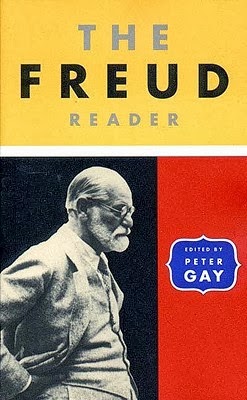


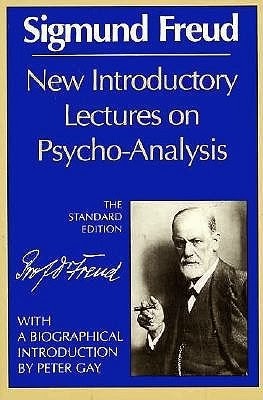
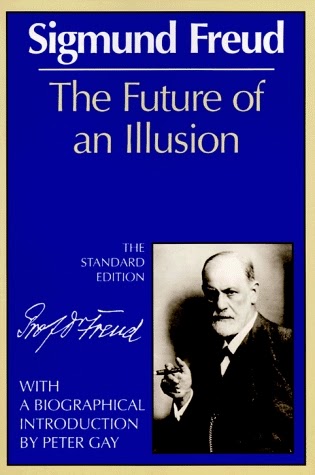

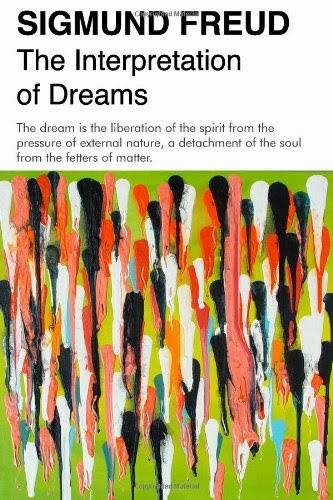
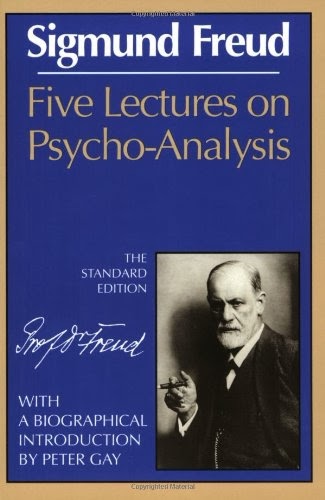

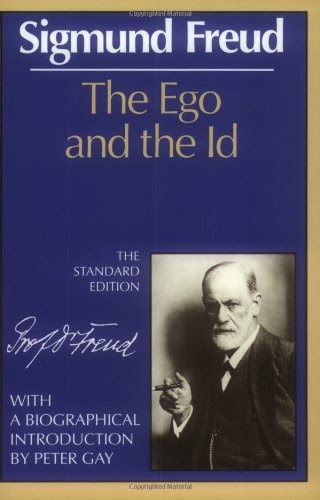

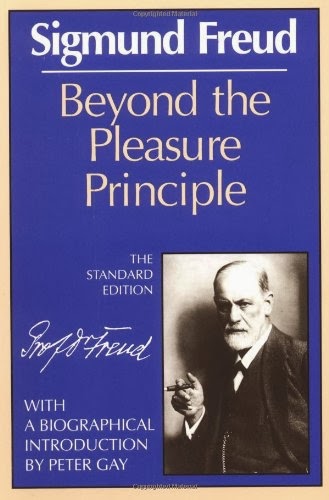


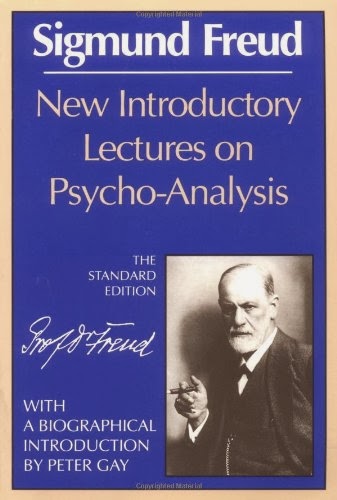

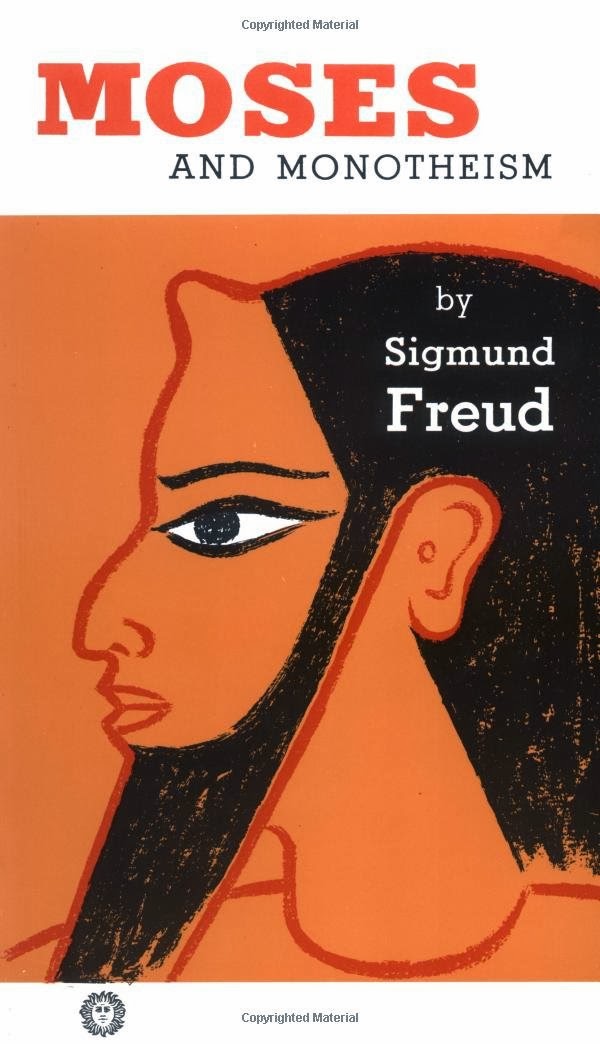

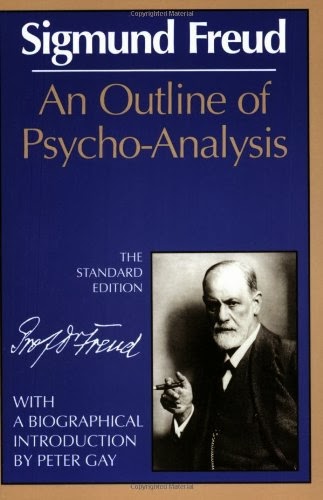
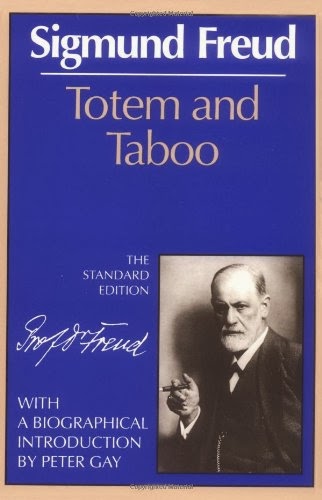




.jpg)



.JPG)


.jpg)
.jpg)
.jpg)
+(Oxford+World's+Classics).jpg)


.jpeg)

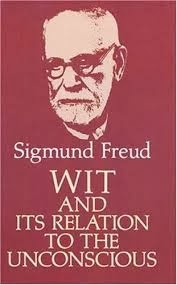


.jpg)

.jpg)
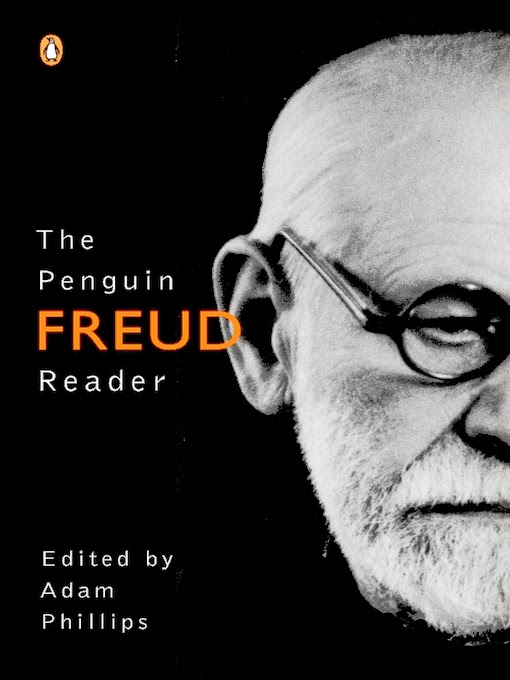



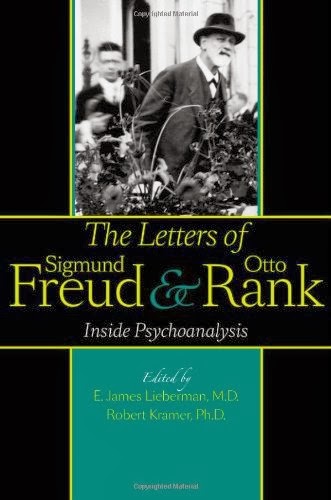
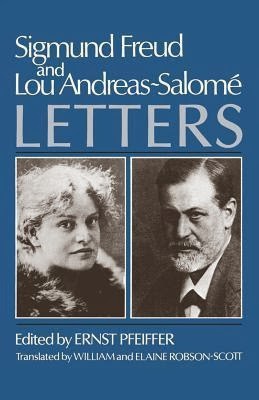
.jpg)
+(Complete+Psychological+Works+of+Sigmund+Freud).jpg)
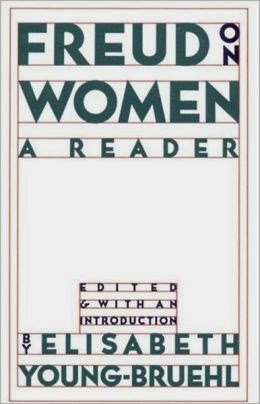
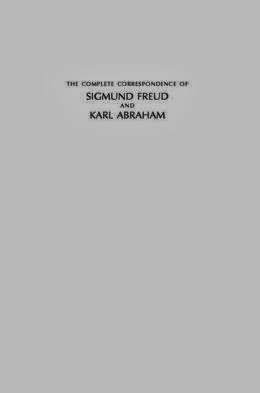
+(Complete+Psychological+Works+of+Sigmund+Freud).jpg)


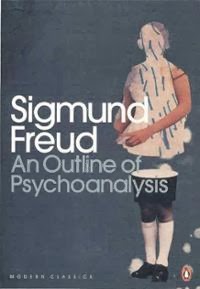.jpg)

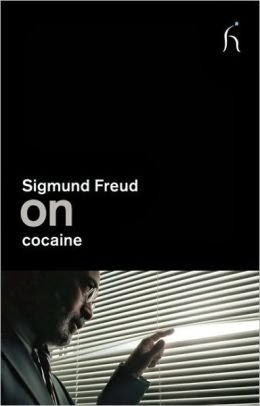
.jpg)

